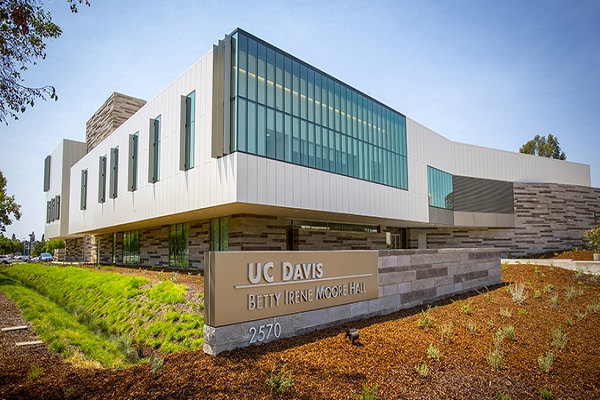University of California, Davis: Native Girl’s Remains Returned to Alaska After More Than a Century
Atrek of 4,000 miles between Alaska and Pennsylvania is a long trip even in three planes with today’s technology, observed Lauren Peters, days after the University of California, Davis, doctoral student and her family made that journey. She and her two sons were returning her grandmother’s aunt to her native Aleut island, St. Paul Island, on the Bering Sea, after her disinterment at the Carlisle Indian Industrial School in Carlisle, Pennsylvania.
That ancestor, Sophia Tetoff, made a much more arduous journey as a 12-year-old girl. Orphaned in 1896, she was taken from the people and home she knew on St. Paul Island, Alaska, to live, eventually, at the Carlisle boarding school. Such a journey was estimated to take 25 days by boat and train at that time.
Five years after Sophia’s arrival at the school — her culture stripped from her as she was forced to work in the surrounding Carlisle community — she became ill with tuberculosis and died, a common fate for Natives at the time.
Native families
The Peterses are among the hundreds of Native families now learning about and retrieving their ancestors from school cemeteries in the United States and Canada. They are believed to be the first to return a Native child to Alaska.
Cemetery
The cemetery at the Carlisle School (Courtesy, Dickinson College)
Indian Boarding Schools and New Government Action
The Carlisle school was the first U.S.-government-sponsored boarding school of an estimated 500 similar schools in North America where Native children were brought to live, work, and often become servants to local townspeople in homes, businesses and farms from the late 1800s to the 1960s.
Deb Haaland, U.S. secretary of the Interior and the first Native American to serve as a Cabinet secretary, has pledged sustained action to “uncover the truth about the loss of human life, and the lasting consequences of the schools.” She created the Federal Indian Boarding School Initiative in June 2021 to investigate defunct residential boarding schools that housed Native American children under the Civilization Fund Act, passed by Congress in 1819. Haaland’s own great-grandfather was a survivor of the Carlisle Indian Industrial School.
When they traveled in June to the former Carlisle site, which now serves as the U.S. Army’s War College, they said they didn’t know what to expect.
“I was defensive of Sophia going into the process,” said Peters, who has formalized her years of research by pursuing a doctoral degree in Native American studies, focusing on the human rights of the dead. But she said she found the government and university officials present at the Carlisle cemetery were very respectful. “They were so compassionate and so gentle. They went way out of their way to get our trust, and [I can say] this is a safe place for other people to go get their children.”
The Peterses hope to lead other Natives home by their example. And they will, predicted Jessica Bissett Perea, UC Davis associate professor of Native American studies, who serves as Peters’ academic advisor.
“This project is truly groundbreaking and will serve as a model for other Native American communities who are grappling with how to bring their missing and murdered relatives home,” said Perea, who is herself Alaska Native, a Dena’ina scholar enrolled in the Knik tribe. She said she recruited Peters to the UC Davis program in doctoral studies based on the research, leadership and service she had carried out on Alaska Native history long before she entered the program in 2020, including serving on a national committee. Peters’ background, and the recent movement of the U.S. government to work with Native people to return the remains of Native children to their homes, put Peters in the right place at the right moment in time, Perea said.
“Lauren’s work contributes to and benefits from a confluence of significant local, national and international actions regarding Indigenous human rights.” — Jessica Bissett Perea
Bringing her home
Bringing Sophia to her resting place on St. Paul Island, home to about 500 people, was a labor of love for the whole Peters family.
Lauren Peters is an enrolled member of the Agdaagux Tribe in the Unangax Nation, also known at Aleut, in the land and waters that are now considered the Aleutian and Pribilof Islands of Alaska. St. Paul Island is one of the five Pribilof Islands located in the middle of the Bering Sea, 300 miles from the Alaska mainland and 800 miles from Anchorage — the closest urban center.
The journey to return Sophia to her remote island birthplace took about four years, starting with researching tribal and family history, and culminating this summer with Sophia’s return to the cemetery of the Russian Orthodox church where she was baptized.
Andrew Peters, a UC Davis biology student entering his senior year, flew with his mother to Pennsylvania for one of many services in June and July carried out to disinter the bodies found in graves at the school. The Peterses were the first to rematriate this summer from Carlisle. (While repatriation means a literal returning to the land of your ancestry, rematriation carries a deeper meaning of returning to a way of life, one that lives with reverence for nature, and is the term being used in this Native process.)
Army officials asked the Peters family how to care for Sophia’s remains. “I saw the Sioux were wrapping [bodies] in buffalo robes, so I asked for a fur seal pelt from St. Paul Island [which is well-known for seals],” Lauren Peters said.

